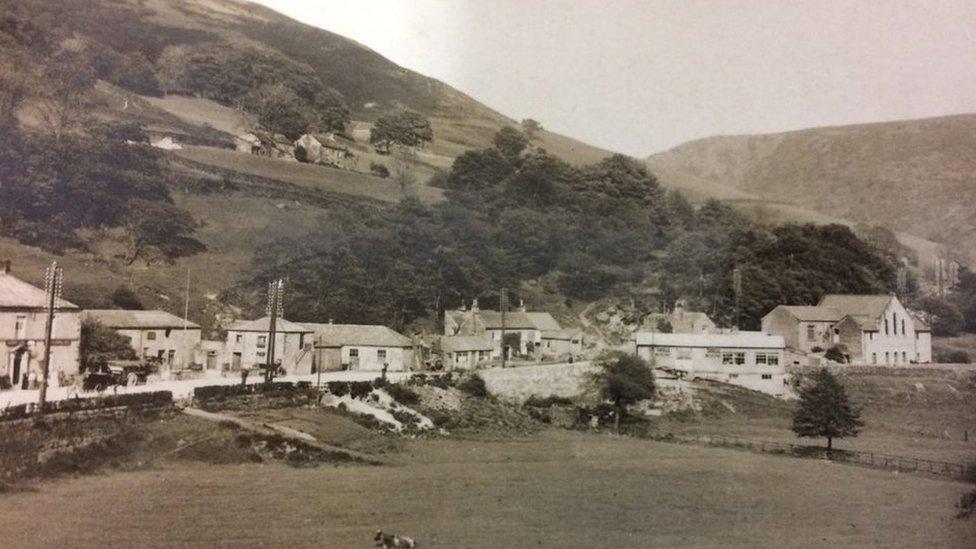Ladybower Reservoir's low water levels reveal abandoned village
- Published
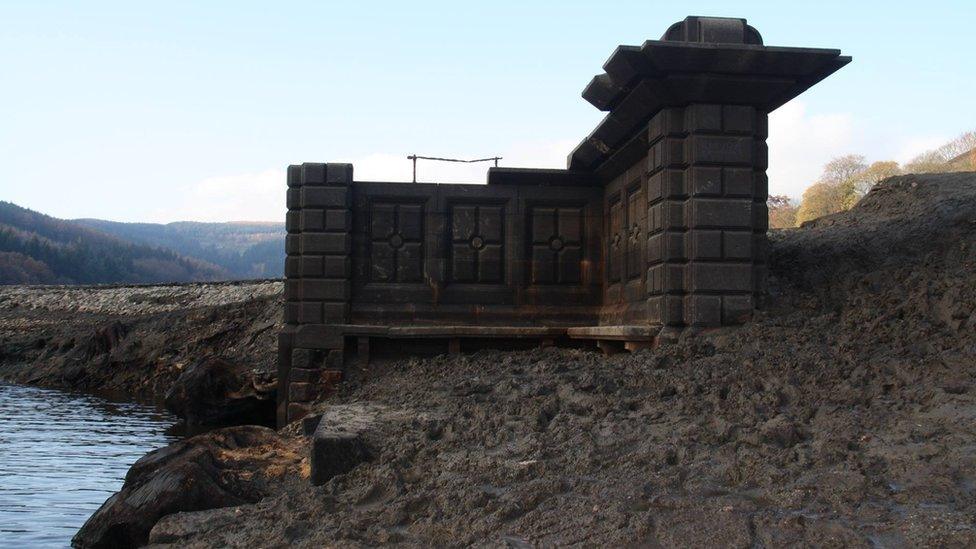
Part of Derwent Hall has been exposed by the low water levels
Low water levels at a reservoir have revealed a rarely-seen abandoned village that was flooded in the 1940s.
Derwent, in Derbyshire, made way for the Ladybower Reservoir, which was built between 1935 and 1943.
Dave Aston from the Peak District's Upper Derwent Visitor Centre said the rare sight of the "exposed village" has attracted many people to the area.
Earlier in November, one man had to be rescued after he got stuck in the mud while inspecting the ruins.

A pump house from Derwent village has been exposed by the low water levels
Historic buildings, churches and limestone cottages in Derwent and Ashopton were lost when the Derwent Valley was flooded.
The plan, which was strongly opposed, was to help serve the growing cities of Derby, Sheffield, Nottingham and Leicester with water.
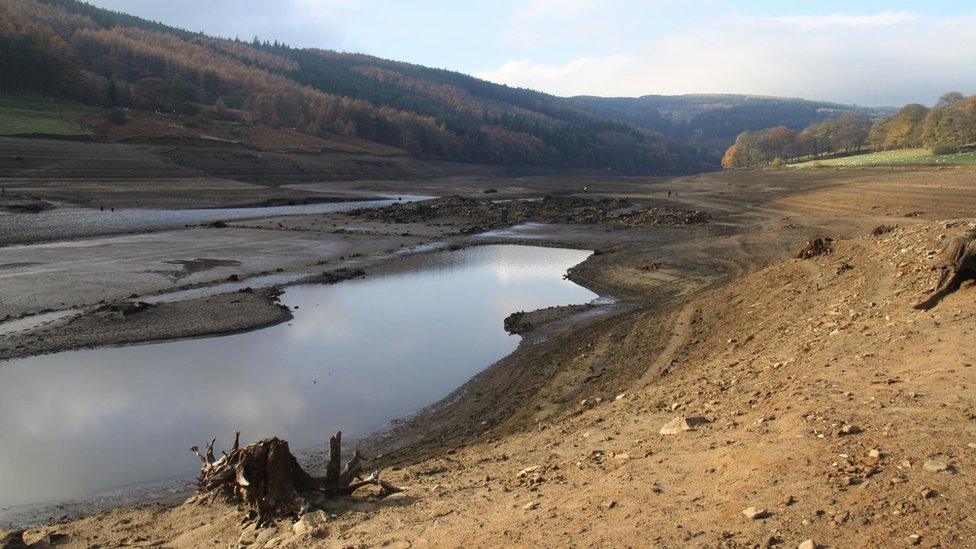
The lost village of Derwent is still visible and drawing the crowds, Severn Trent Water has said

A Lancaster bomber flies over a full Ladybower Reservoir in May, to mark the 75th anniversary of the Dambusters raid
Mr Aston said he last saw the flooded village in 1995, after a dry period that year, and also following the hot summer months of 1976.
"It is a rare occurrence to see the ruins of Derwent village," he said.
"The long dry spring and summer has lowered the water levels of the reservoir slowly and in the last four weeks the remains have become visible.
"Visitor numbers are soaring because of it. People are walking in the exposed village."
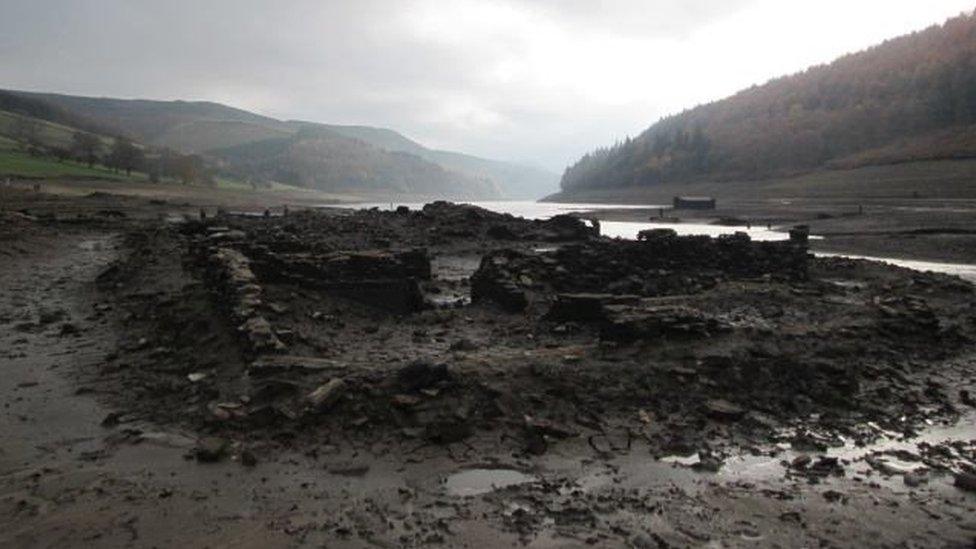
Rob Eardley visited the site on Thursday and said it was "surreal"
On 3 November, Edale Mountain Rescue Team reported having to rescue someone, external who got stuck in the "extremely thick" mud around the ruins.
It took 30 minutes to free the man, whose temperature and "general welfare" had dropped ahead of being rescued.
The team urged people to view the remnants from solid ground.

A postcard shows the spire of Derwent's church emerging from the water after the valley was flooded
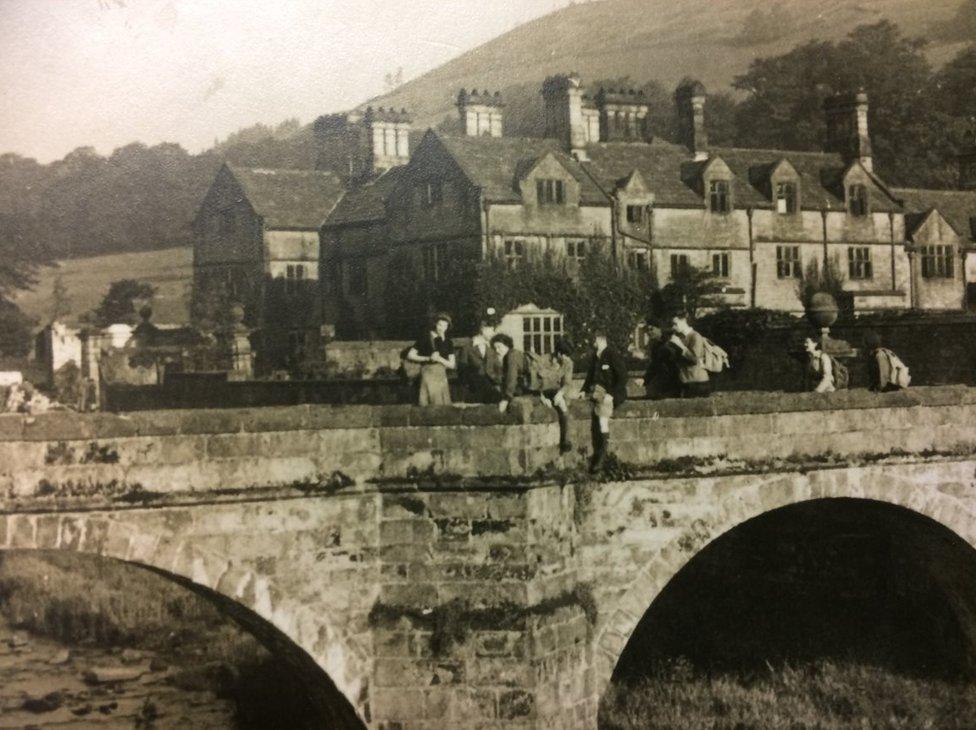
This postcard shows young people gathered on a bridge in Derwent
A spokeswoman for Severn Trent Water has said the reservoir's levels are "lower than normal" following the "exceptionally dry and hot summer".
She added the company expects it to refill over the rest of autumn and winter and water can be moved from nearby reservoirs "if needed".
Allow X content?
This article contains content provided by X. We ask for your permission before anything is loaded, as they may be using cookies and other technologies. You may want to read X’s cookie policy, external and privacy policy, external before accepting. To view this content choose ‘accept and continue’.

Follow BBC East Midlands on Facebook, external, on Twitter, external, or on Instagram, external. Send your story ideas to eastmidsnews@bbc.co.uk, external.
- Published29 November 2017
